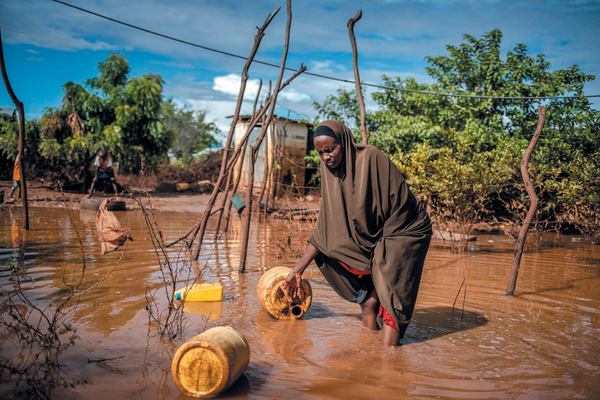By Protecting the Planet, We’re Protecting People, Too
Boundaries for preserving fresh water, biodiversity and other planetary resources tighten when they must also protect people
A woman in Kenya tries to collect some of her belongings after torrential rain led to heavy flooding.
Luis Tato/AFP via Getty Images
There are limits to our natural resources. At some point they run out, or we ruin them. When either happens, both the physical system and the human system on Earth are hurt. In 2019 the Earth Commission—an international team of scientists that I co-lead—collaborated with the Future Earth scientist network and the Global Commons Alliance to convene a large group of researchers to establish boundaries for resources that could keep the planet and its people safe.
We began with five domains that cover the major components of Earth’s interconnected systems: climate, biosphere, water cycle, aerosols and nutrient cycles (nitrogen and phosphorus). In each case, rather than setting a single threshold, we set two: a limit that was “safe” for Earth overall and a “safe and just” limit that would do “no significant harm” to people worldwide. In all cases, the safe and just limit is equivalent to or stricter than the safe limit. Our group is now working on limits for two other domains: oceans and chemical pollution such as microplastics.
The hard part, of course, is determining what is “just” and putting a number on that evaluation. Consider climate change. The Intergovernmental Panel on Climate Change warns that the world must prevent global warming from surpassing 1.5 degrees Celsius above preindustrial levels; beyond that, it is highly likely that we will reach tipping points for significant worsening of damaging climate effects. So 1.5 degrees C is a boundary intended to keep Earth and people relatively safe. Yet even though we have raised global temperature by only 1.2…
Read the full article here







